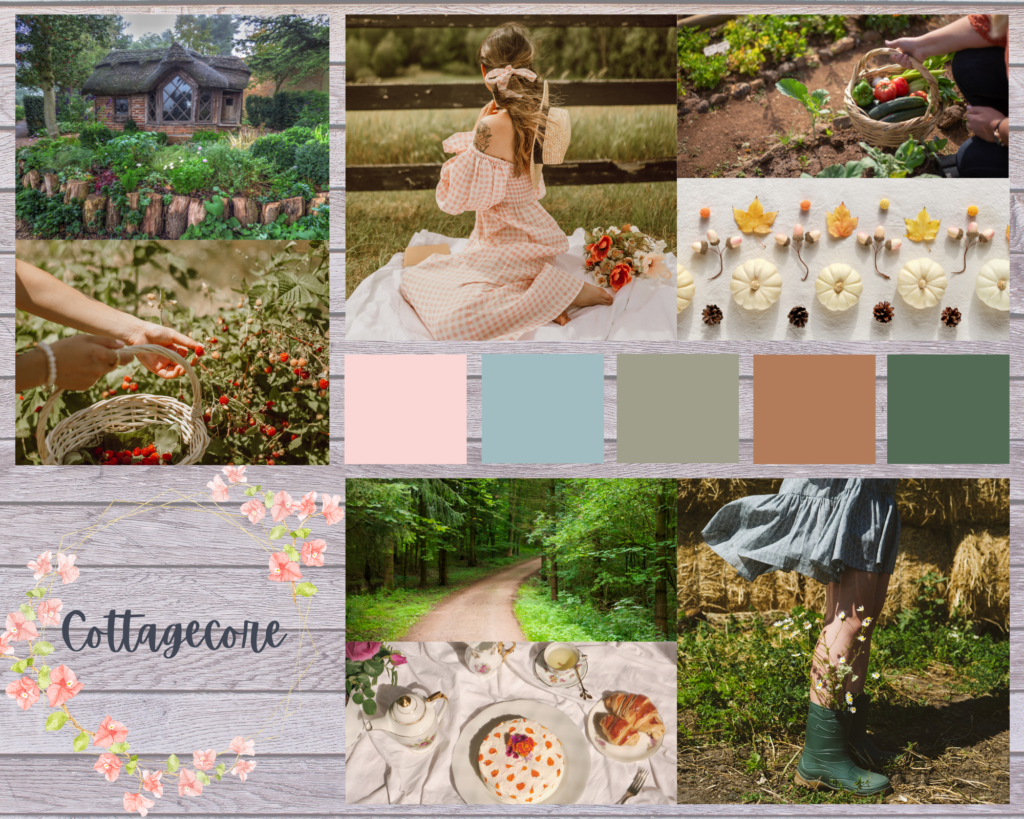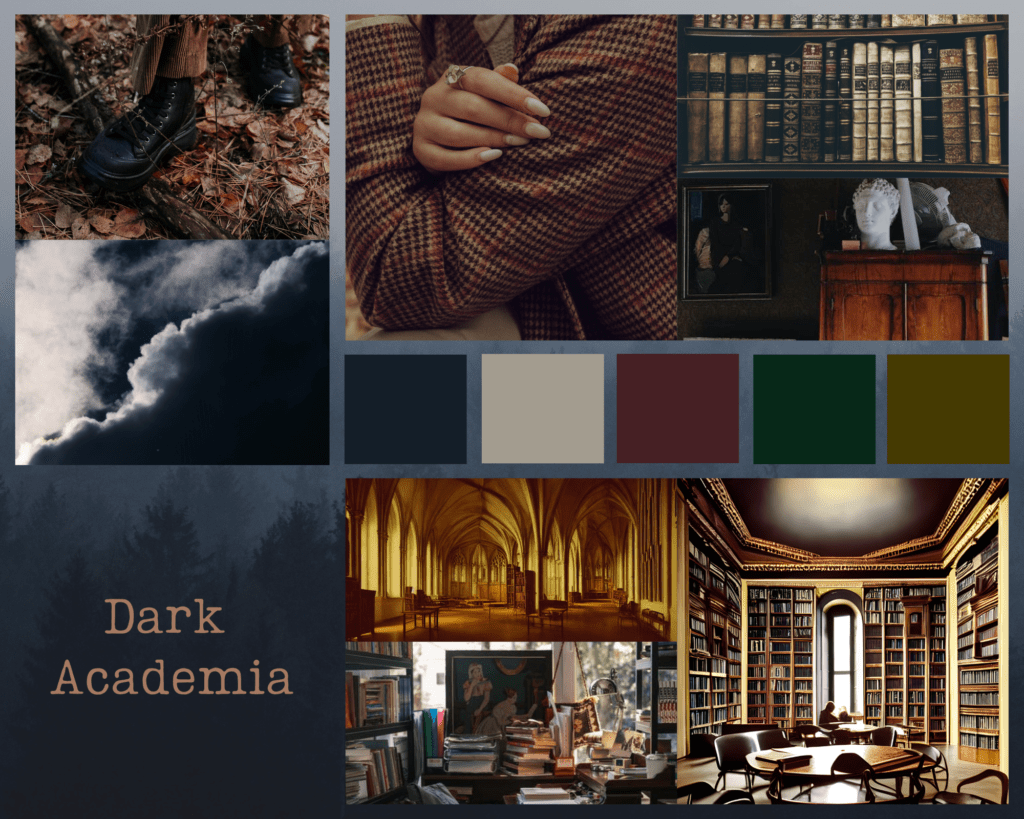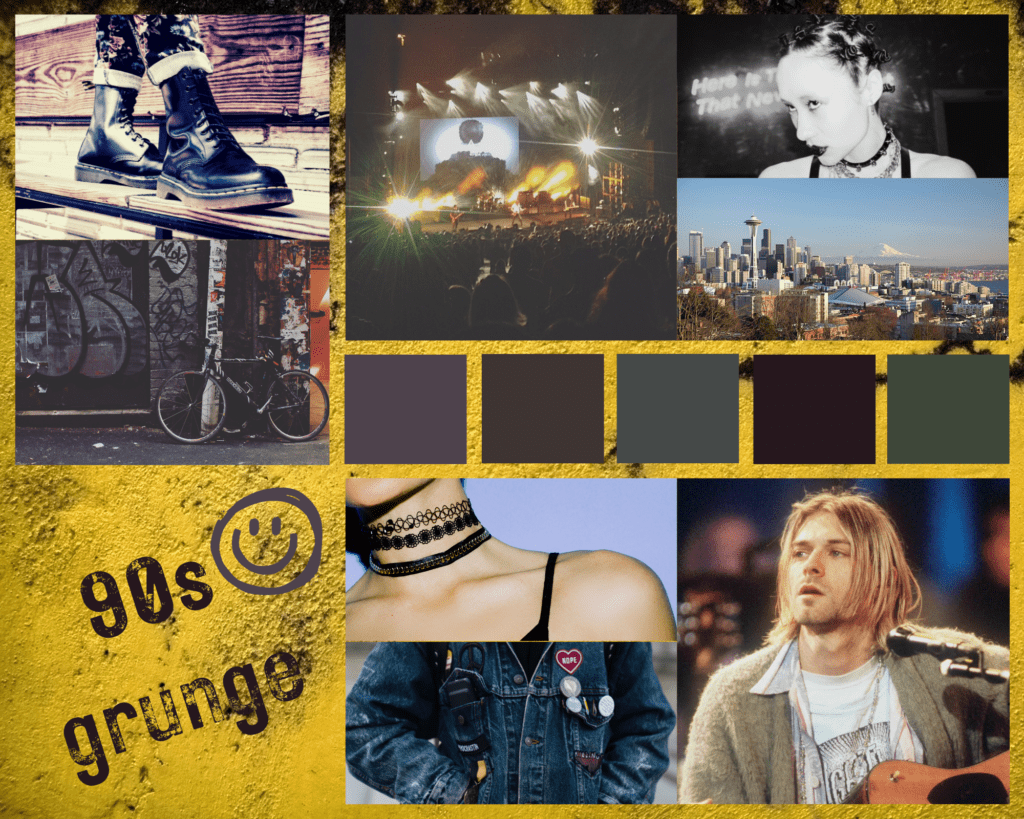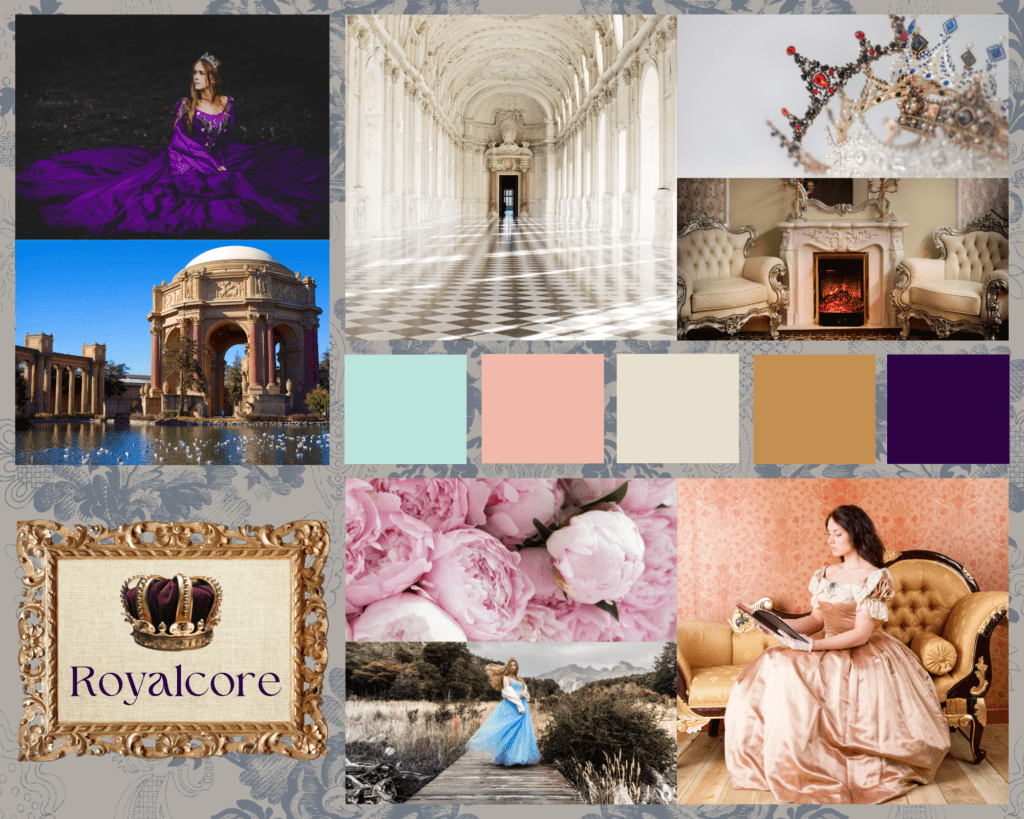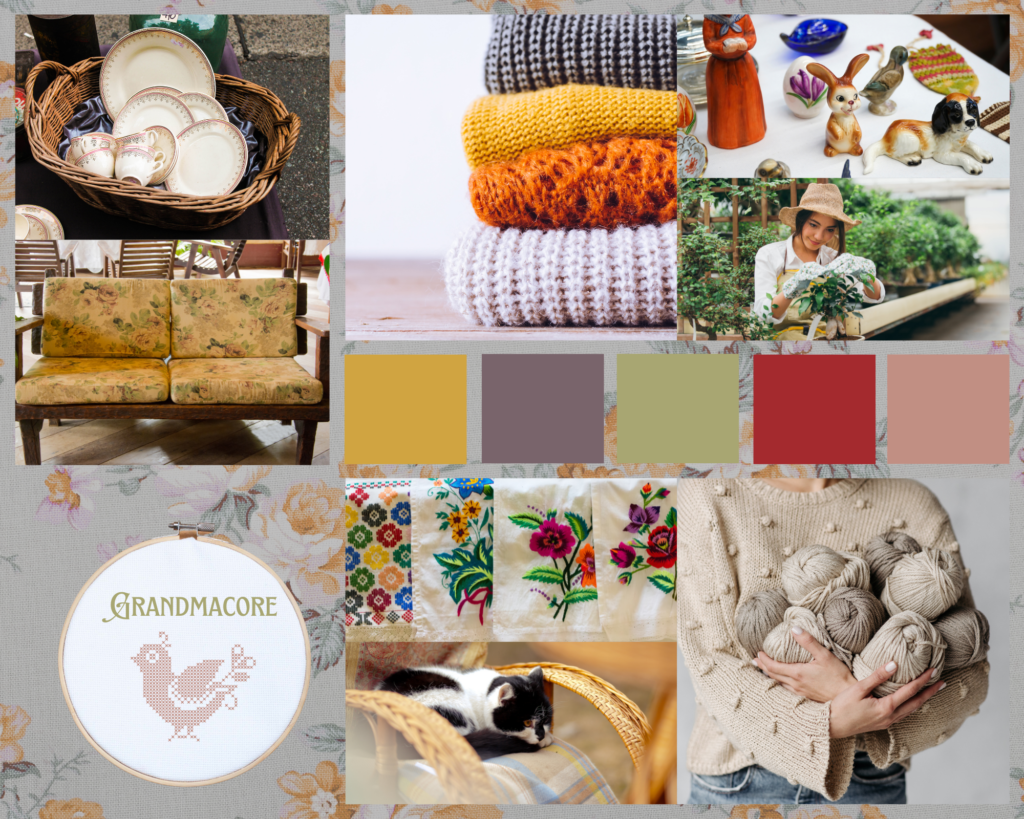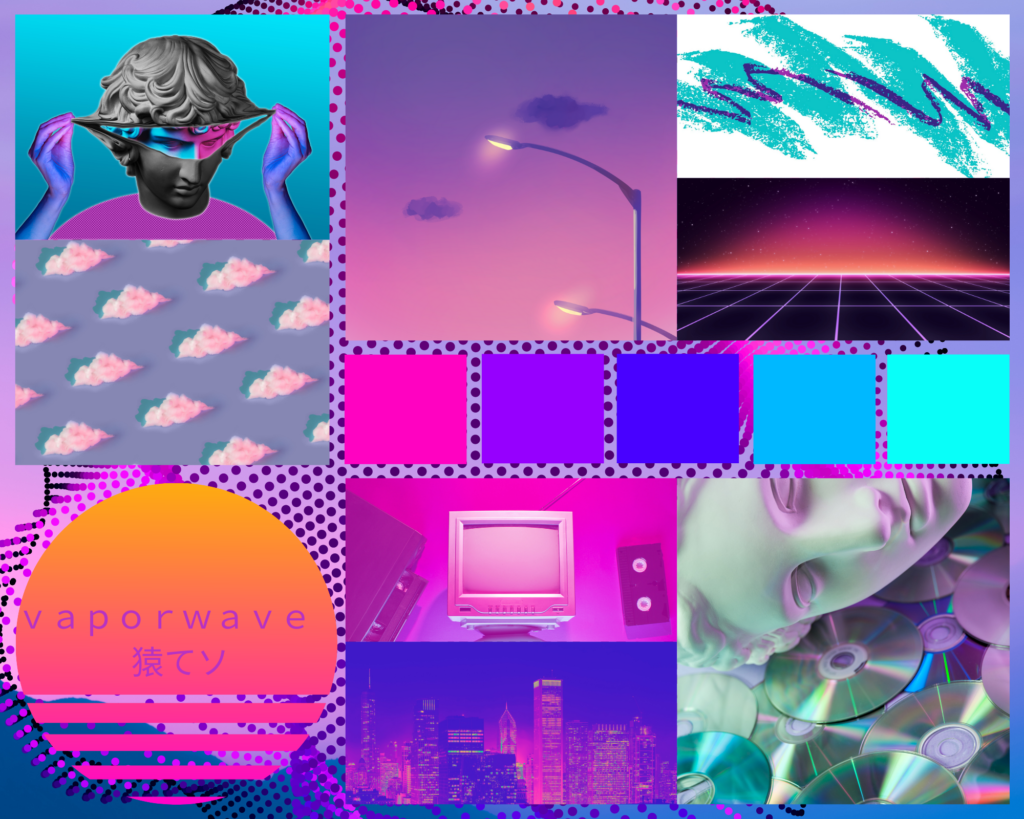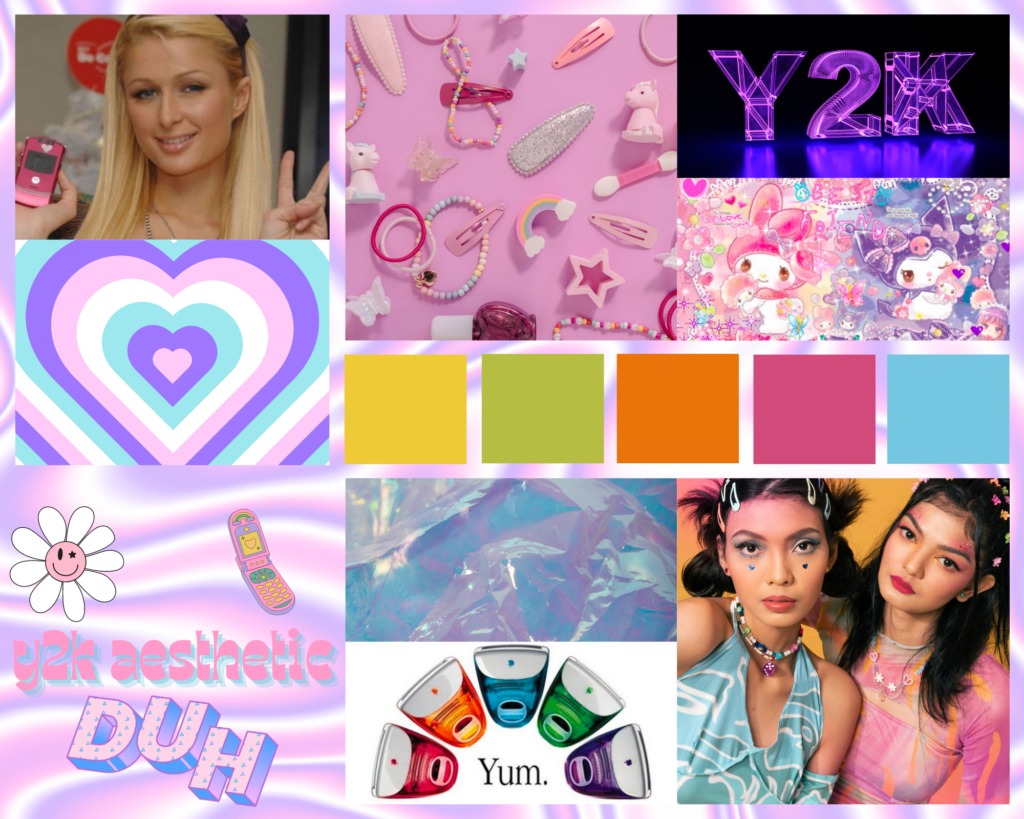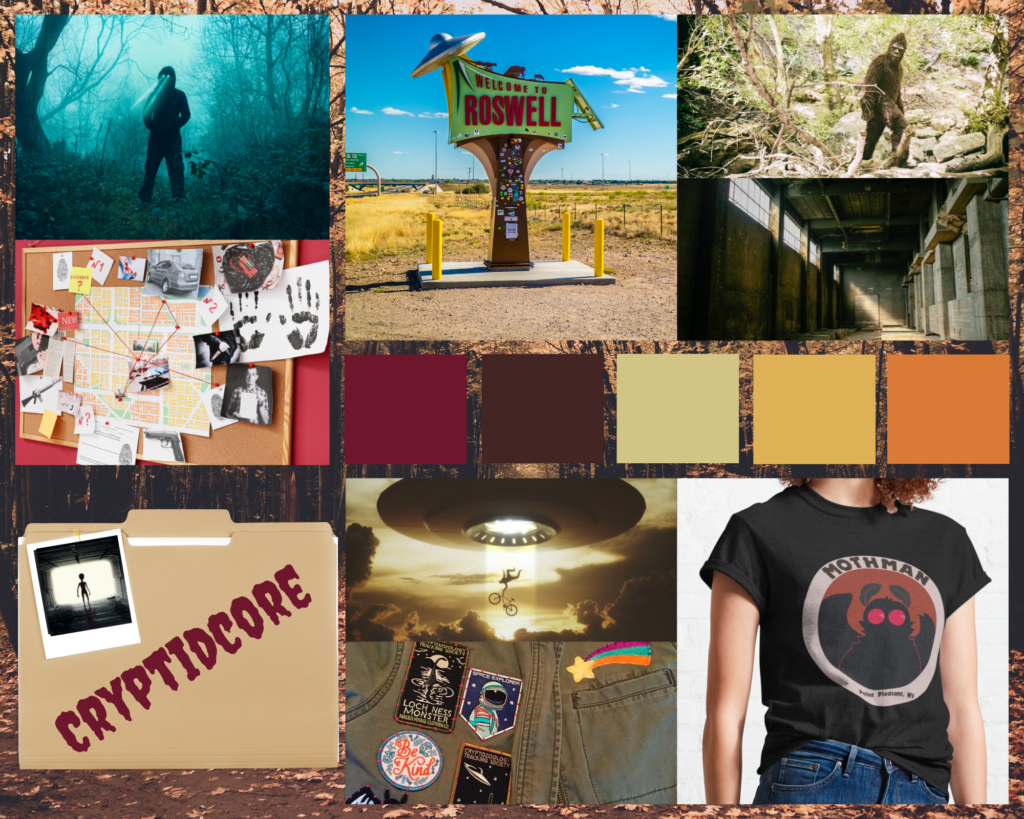Gen Z Web Design: Preparing for a New Age of Consumers

Gen Z grew up with a cell phone in their hand and the internet at their fingertips. They’re the very definition of tech-savvy digital natives, born into a world powered by mobile devices and e-commerce.
They’re smart, curious, passionate, practical, and skeptical, all of which spells trouble for brands that stand behind the idea that traditional marketing has a bright future ahead.
Who is Gen Z?
Let’s start with the numbers:
Generation Z is anyone born between 1996 and 2010 or between the ages of 12 and 26 in 2022.
Worldwide, they’re the largest demographic, making up 1/3 of the global population (2.56 billion) and 40% of global consumers, with spending power to the tune of $360 billion.
This group is also the most ethnically diverse of any other age-based demographic in the United States, with 52% identifying as white, 25% as Hispanic, 14% as Black, 6% as Asian, and 5% as Other.
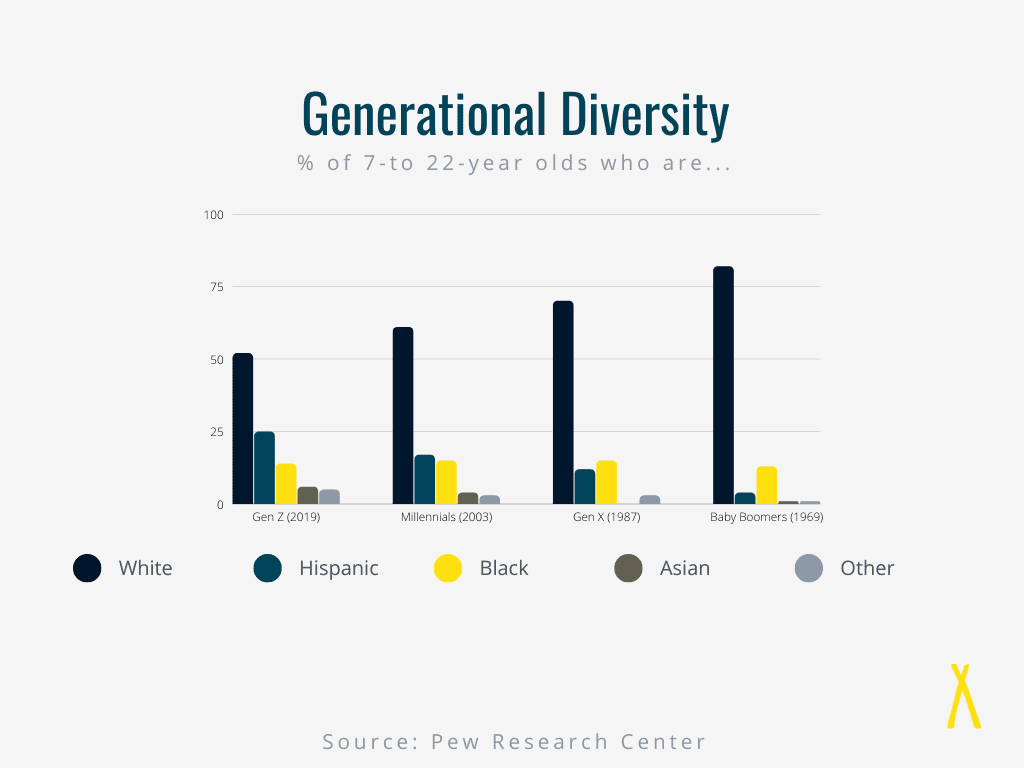
Furthermore, they’re projected to be the most highly educated generation, with 57% of 18-21-year-olds enrolled in college in 2018. This compares to 52% of Millennials in 2013 and 43% of Gen X in 1987.

Defining a New Generation of Digital Natives
Outside of quantitative analysis, Gen Z is hard to define because so much of the current state of youth culture revolves around creating your own identity, regardless of what brands, peers, or previous generations think.
As a generation that’s never been offline, this emphasis on individuality isn’t surprising.
Before the internet, most people lived in social echo chambers, parroting commonly accepted ideals and expectations promoted by the media, family, friends, and the government. These entities had the ability to shape our entire perspective on life, and if we didn’t identify with the culture at large, ostracization and ridicule were very real dangers.
That ended in 1995 when home internet access became widely available. Suddenly, we had the opportunity to discover art, culture, style, and causes we’d never had the resources to explore before.
With the continuing growth of social media and online communities, differences started to matter less and less, with similar interests dominating the vast majority of conversational topics. Online gaming further opened that door, welcoming anyone interested in team play to come together for a common cause.
If you take a moment to think about it, Gen Z’s warmth towards things once seen as niche, weird, or dark makes sense. The taboo of most topics disappears when you can jump online to discover thousands of people who are already talking about it.
While that can be dangerous, exposing tween and teen brains to materials they’re not ready for, we can’t deny that it’s also a catalyst for creating a more accepting global community and staving off the often devastating results of social isolation.
Gen Z Web Design 101
Because Gen Z customers have such an amorphous identity, brand marketers are facing an uphill battle if they want to connect with this tech-savvy group.
Many are left asking how they’re supposed to create a target audience when the entire generation seems to identify with and create new trends every day.
Further complicating the issue is this young generation’s ability to harness complete control over the digital content they see. Thanks to streaming services, YouTube, and ad blockers, Gen Z won’t waste time watching your business try to sell them something when they don’t have to.
Instead of spending time creating old-fashioned ad content and spending money on YouTube commercials, focus your efforts on appealing to their need for consumer connectedness and brand authenticity.
tldr: If you want Gen Z to buy from your brand, you must ensure that your site is mobile-optimized and lightning fast.
Perhaps the most important characteristic of Generation Z for marketers to keep in mind is that they are more mobile-focused than other generations.
A whopping 98% of this demographic own a smartphone, with 55% using them five or more hours a day and 26% using them ten or more hours a day.
Furthermore, one IBM study found that 75% of this demographic prefers mobile devices for browsing websites, online shopping, and staying connected, even though 69% own a computer.
When creating your Gen Z web design strategy, remember that they’ve never had to deal with the dawn of the online age, when dial-up internet connections and Geosites set a clunky, unwieldy standard. They only know optimized experiences that offer a seamless transition across all devices. If your site lags or doesn’t fit their screen correctly, they will not stick around.
What Brands Can Do:
- Implement a rigorous UI/UX quality assurance process, particularly when it comes to your mobile responsiveness.
- Consider social commerce. Many social media platforms like Facebook and Instagram already have built-in shopping features. You can capitalize on Gen Z’s preferences by bringing your products where they’re most likely to spend their time.
- Optimize for long-tail keywords. There’s a good chance that mobile-based search engine users are on-the-go, which means you should be focused on location-based queries like “near me” and “in [city, state, etc.]”
tl;dr: To Gen Z, it doesn’t matter how affordable your product is if you rely on sweatshop labor or how convenient your service is if you donate money to hate groups. If you want their loyalty, they expect you to be highly attuned to social issues and to use your platform to make the world a better place.
In a world where consumers have abundant, easy access to information, brands can no longer hide behind industry secrets and non-disclosure agreements.
Controversy gets likes, and Gen Z’s obsession with exposing injustice or misdoings leaves underhanded companies at risk of exposure with the click of a button. For brands to stay relevant, they absolutely must prioritize honesty, transparency, and values at the center of their marketing.
In a study by DoSomething Strategic, 66% of Gen Zers said they have a more positive perspective on brands that identify with a social cause, and 58% claim that a brand’s philanthropic associations have a direct influence on whether they’re willing to make a purchase.
Another survey from Creatopy echos those sentiments, with 67% saying they either strongly agree (19.34%) or agree (47.45%) that they “prefer brands that take a stand on social issues like the environment, feminism, LGBTQ rights, and racial discrimination.”
What Brands Can DO:
Be prepared to take a firm stance on key social issues and prove that you practice what you preach. Consider making an “Our Values” or “Brand Causes” page that showcases what you stand for.
Don’t waste time airbrushing because Generation Z isn’t interested in perfection. They can easily differentiate between a brand that’s trying to sell their customers an impossible standard versus a brand that features real solutions for relatable problems.
If you mess up, admit it and fix it. Gen Z customers are far more likely to continue frequenting your business if you’re willing to hold yourself accountable for your mistakes. The chances of that are vastly reduced if they have to find out from other digital content creators exposing your brand.
tl;dr: Gen Z shares everything about their struggles and growth with their online communities, and they seek that authenticity from everyone else, including brands.
The new generation of internet users is all about irony, memes, and almost uncomfortable levels of honesty.
They are unabashedly brave in their willingness to be completely real about everything from their mental health to their personal faults. Still, they do so with a level of irreverent humor that older generations tend to balk at.
Brands that want to be relevant to Gen Z need to ensure that the story they tell is in the language they speak. The cold, corporate-consumer separation of yesteryear isn’t appealing to young people seeking empathy and connection.
They want to know that there are real people behind the products and services they spend money on and that those people understand the struggle of everyday life.
What Brands Can Do:
- Hire Gen Z to handle your social media. If the people juggling your online presence don’t understand or openly dismiss younger people’s voices, it will be glaringly evident that your brand is not in touch with their needs.
- Video content is an excellent medium for storytelling. This demographic spends a lot of time on YouTube, and if you can create funny, helpful, or entertaining content, you’re more likely to engage them on platforms they’re already using.
tl;dr: If there’s one thing the vast majority of Gen Z customers can agree on, it’s that aesthetic matters.
Your website should be visually pleasing, with the design elements that this demographic prefers, like nostalgia-driven graphics, bold colors, and simple patterns.
Consider asking your customers to get involved with your web design process, sending out surveys with various color palettes and accent imagery. Let them choose the combinations they like best, and you’re sure to appeal to their sense of style and their need for brand-to-consumer connections.
What Brands Can Do:
- If it’s relevant to your brand, pick an online aesthetic as the foundation for your design. Not only are you more likely to attract the specific niche you’re marketing to, but it also provides a nearly endless fount of inspiration to draw from.
- Make your mark on social media, too. Your branding should directly associate your website with every other piece of online content you produce. Bring your colors, logos, and imagery to Instagram posts and email templates.
- Scroll through Gen Z content creators’ feeds to stay in touch with your customers. Trends change quickly, and you should be ready to adapt when the time is right. That doesn’t mean a complete overhaul, but occasional revamps and redesigns are necessary to keep pace with what the demographic is looking for.
The Rise of Gen Z Web Aesthetics
If you spend any time on TikTok, Pinterest, or Tumblr, you’ve likely noticed that Gen Zs are completely obsessed with the idea of an “aesthetic” as a means of self-expression.
These microtrends of art, fashion, color, values, and interests are intended to instill a sense of comfort, control, and uniqueness, while also granting them access to pre-existing communities of people who also identify with that aesthetic.
NATIV3's Gen Z Aesthetic Deep Dives
We recently rolled out an in-depth look at eight popular aesthetics social media influencers and designers are capitalizing on to appeal to younger generations.
Cottagecore Aesthetic
The cottagecore aesthetic is one of simple living in the modern era, accented with the scent of freshly baked bread and the lingering taste of homemade strawberry jam.
Cottagecore embraces rural countryside scenery and quaint village domesticity, with similar aesthetics to that of the 18th-century Romanticism movement.
It’s an aesthetic based on a simple rural lifestyle and everything it entails, from spending days wandering through thicketed forests to favoring candlelight over electricity. Nature is the heart and soul of the cottagecore community and serves as a form of escapism from the hustle and bustle of real life.
Dark Academia Aesthetic
Dusty tomes, candlelit studies, and classic prep school fashion are the center of the dark academia aesthetic, an online subculture that romanticizes the ivy-covered hallowed halls of crumbling college campuses.
This trend puts academic life on a pedestal and consists of a following obsessed with classical literature, the murder genre, and gathering to discuss Oscar Wilde as an author of merit.
90s Grunge Aesthetic
Edgy, dark, and centered around musicians in the emerging Seattle scene, the 90s grunge aesthetic has recently re-emerged as a fashion movement. That said, it lacks the disillusionment, drug culture, and anti-conformity of its predecessor, along with the passion for underground music.
Gen X, who participated in the subculture in their teens and early 20s, have criticized the fact that 90s grunge aesthetic influencers fly in the face of everything that the movement was about by ignoring the economic factors that snowballed into the often violent and drug-laden communities of young people.
Royalcore Aesthetic
For those who long for a time when chivalry, luxury, and scandal abound, royalcore offers a trip back in time to when monarchies reigned.
Those who participate in the community indulge in long afternoons lounging in the garden, hosting fully-costumed tea parties, and posting videos about their lives in the lap of luxury.
Many refer to it as the grown-up version of Disney Princesses, as it relies on a romanticized version of monarchial history without reflection on the politics, war, and more problematic behavior of their royal idols.
Grandparentcore Aesthetic
If you find yourself longing for the smell of freshly-baked cookies and old potpourri, be prepared to fall in love with the grandmacore and grandpacore aesthetic. While it shares many similarities with cottagecore– a love of nature, escaping to a simpler time, handmade goods– it sets itself apart as distinctly more “tacky” and vintage, specifically emphasizing a set-in-your-ways nostalgia over whimsy and romance.
Much of the community prides itself on presenting with unconditional kindness and over-the-top generosity, much like a typical grandparent. They enjoy being a source of comfort and wisdom to those they love, though many who identify with the grandpacore aesthetic tend to be of few words compared to those who lean towards grandmacore.
Vaporwave Aesthetic
It’s hard to explain the Vaporwave aesthetic in the same way that it’s hard to describe the taste of water. It’s such a bizarre Frankenstein’s monster of misaligned parts– liminal spaces, technicolor dreamscapes, and off-beat anime references come together in a cacophony of visuals set to a smooth synth soundtrack.
Meant to be an ironic take on the Chillwave movement, Vaporwave attempts to take current pop culture and make it retro before its time. It’s ghostly, unsettling, and flecked with Pepto Bismol pink and other pastels that should be pleasant to look at but just aren’t.
Y2K Aesthetic
Ah, 2000. For most Millennials, it feels like just yesterday we were flipping through J-14 Magazine, listening to the Backstreet Boys, and putting on yet another swipe of glitter-studded Lip Smackers (bubblegum flavor, of course). It was a time of optimism, anxiety, and translucent home telephones, and now it’s back again in all of its glory, thanks to the rise of the Y2K aesthetic.
It was a simpler time, certainly, when Kim Kardashian was Paris Hilton’s personal assistant, and Joe Rogan was just some guy on a tv show where people ate scorpions for cash.
Cryptidcore Aesthetic
Aliens, ghosts, Bigfoot, and mermaids– The question of their veracity has haunted the minds of skeptics and believers alike for centuries. Now, with the rise of the cryptidcore aesthetic, it’s at least a little more socially acceptable to rant about the latest Lowlands Frog sighting without your mother questioning whether you need to go back to see that therapist or if you’ll just let everyone enjoy their Thanksgiving dinner for once.
With the rise of modern cable television and, later, the internet, those born with the deeply ingrained curiosity to understand things outside of logic and science have only grown in their hunger for knowledge.
How Other Brands Are Appealing to Gen Z
Not sure how to approach your Gen Z web design strategy? These brands exemplify the demographic’s online must-haves.
Fashion Brands
Gen Z’s fixation on identity and self-expression has opened the door for seemingly infinitesimal micro-trends, many of which pull inspiration from the past, while others are focused firmly on the future of style.
The internet generation also has the benefit of e-commerce, allowing them to explore brands, clothing culture, and ideas from around the world.
Cider is a fashion brand with a distinctly Gen Z voice.
Not only do they categorize their clothing by “moods,” some of which include “Feeling Cute,” “Feeling Dreamy,” and “Feeling Grunge,” but they also openly dedicate themselves to several causes, including inclusivity, sustainability, and diversity.
They practice what they preach by offering sizes ranging from 0-24, curating clothes repair YouTube playlists to reduce consumer-level waste, and transitioning to biodegradable packaging by the end of 2022.


Dynasty George revolves around the cottagecore aesthetic, an excellent choice given their mission of promoting sisterhood, sustainability, and confidence through ultra-femme clothing crafted from vintage fabrics in healthy workshops.
They are rare amongst many Gen Z fashion brands because of their relatively high cost, but they promote the piece as an investment that grows with the purchaser. Their dresses are nursing and maternity-friendly, crafted from ethically sourced materials, and creatively designed.


Deer Doll is very aesthetics-driven, creating style collections based on very specific aesthetics like light academia, dark academia, kawaii, and cottagecore. Their relatively low prices and mix-and-match pieces welcome Gen Zers to play with trends to create their own unique fashion identity.
They provide inspiration and ideas through custom imagery that combines detailed art scenes with photography, depicting their models interacting with the scene while wearing a matching style.
That said, they don’t go out of their way to comment on their beliefs, values, or philanthropy. Most of their pieces are only available in one size, implying that the biggest reason for their popularity is aesthetics rather than social responsibility.


Makeup and Self-Care Brands
Unlike their Millennial predecessors, Gen Z is over full-face makeup and expensive designer brands.
They’re looking for natural ingredients, simple beauty routines, and indulgent self-care products that help them feel more mentally and physically fulfilled.
Glossier rose to popularity with Millennials but has quickly grown in the Gen Z population thanks to their minimalistic marketing, simple ingredients, and stunning design elements.
Their popularity amongst dewy-faced skincare influencers and YouTube makeup channels has sparked a passionate community of Glossier followers with serious brand loyalty.


Selfless by Hyram hits the mark on just about every aspect of branding that Gen Z is looking for.
They support an abundance of causes, provide regular transparency reports, focus on sustainable sourcing, and all of their site models are delightfully unedited to showcase real people with real skin concerns.
They also do an excellent job of educating their customers through their video content, which features on every product page.


A decade ago, e.l.f. was a “cheap” alternative to more expensive luxury brands with plain black packaging, ho-hum performance, and very little online presence.
They’ve since rebranded, rising to the top as an affordable, high-quality, cruelty-free, and vegan cosmetics and skincare line that caters to trends before their competitors.
e.l.f. Cares, their charitable organization, also does a lot of work with causes that matter most to Gen Z, like BLM and LGBTQ communities.


Snack Brands
Gen Z is completely unashamed of their snacking, with many of them preferring to graze throughout the day on their favorite treats instead of sitting down for a full meal.
While they’re not necessarily focused on counting calories, they do want snacks that offer unique flavors and ethically-sourced ingredients.
ffups leans into Gen Z snacking with “tasty tubes,” their take on the classic cheese puff.
They never pretend to be healthy or good for you, and in fact actively push back against the idea with quotes like, “They’re NOT HEALTHY, JUST DELICIOUS tasty crunchy little guys.”
Their Instagram is also on point, jam-packed with legitimately funny memes. It’s a Gen Z marketing win, through and through.


OffLimits Cereal is the brainchild of a graphic artist whose mother wouldn’t allow sugary breakfast foods in their household. Her take on milk’s BFF keeps all the sweetness and fun, but removes the artificial ingredients.
There’s a lot to find charming about OffLimits. There are four, fleshed-out mascots, each with their own animated shorts, packets of cereal glitter to add a little magic to your morning, and a prize gallery to cash in your points like an old-school arcade in exchange for branded toys.
The creator also works to fight the “starving artist” trope, and wants to empower other creatives to reject the idea that they have to struggle for their passion.
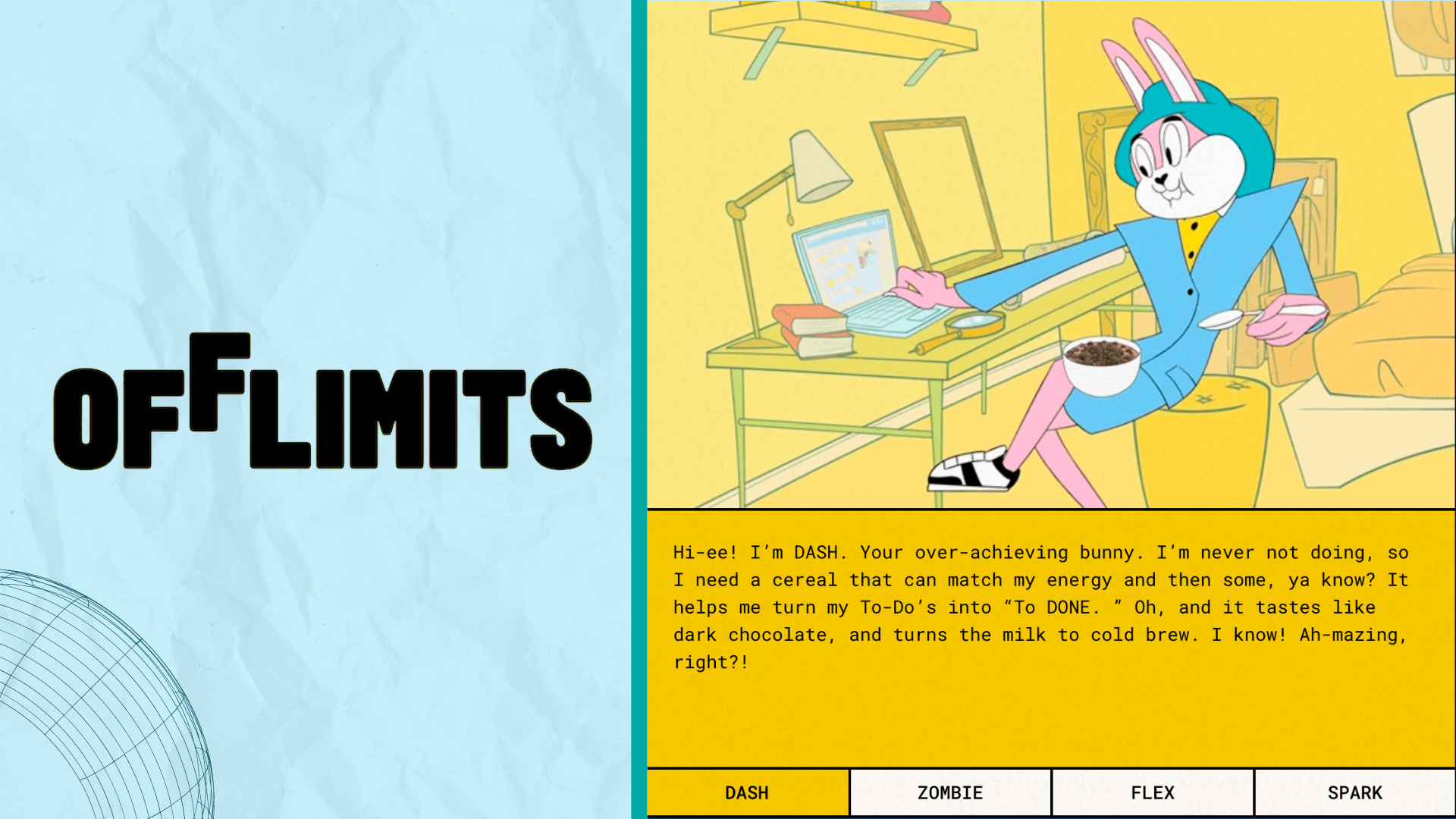

Gigantic is a reimagining of traditional candy bars, focused on fair trade, plant-based ingredients that are just sweet enough to satisfy.
Their marketing is no-nonsense, with a simple but bold website that maintains consistent branding throughout.
These bars clearly resonate with buyers, as Gigantic rakes in consistent 5-star ratings along with comments expressing undying adoration for these more-than-generous servings and high-quality ingredients.


Tech Brands
Today’s consumers are looking for form and function in equal measure from their tech brands, which is to be expected when aesthetic dominates their decor choices.
Razer has long been a gamer favorite, offering PCs, peripherals, and phones in very aesthetic matching sets.
While most of their products are classic black with programmable RGB accents, they often release brand collabs and recolors with partners like Sanrio, miHoYo, Sega, and popular streamers.
They also create products to create a more seamless gaming experience across mobile, console, and PC, which appeals to Gen Z’s preference for phone-based play.


Riot Games owns several social-based gaming properties like League of Legends, Teamfight Tactics, and Valorant, all of which are available on PC and mobile.
They’re deeply involved in social, diversity, and inclusion issues, emphasizing their impact across their marketing materials. Riot celebrates their community and actively works to create a more equitable landscape for gamers.


TikTok is the Gen Z tech brand and often fuels other aspects of the demographic.
Aesthetics? That’s TikTok.
Mental health normalization? That’s TikTok.
Brutal honesty and empowerment through trauma recognition? That’s TikTok.
It’s a powerhouse across many age groups, but there’s no denying that Gen Z runs the game.


